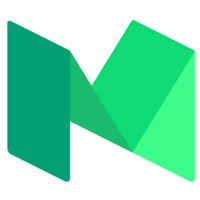
Medium, the online publishing platform launched by Twitter cofounder Evan Williams, has announced a US$5 monthly subscription membership upgrade that promises a better reading experience and better content.
Medium on Thursday opened the subscription offer to a limited number of people who meet certain criteria, according to Williams, who is Medium’s CEO. Over the next few weeks, it will roll out across the board.
“No matter how skilled or well-intentioned, ad-driven publishers are rewarded on their ability to capture attention and even, at times, to weave a particular corporate-driven narrative,” Williams pointed out. “Not to provide informed perspectives, be thorough, or even be factually correct. But to capture attention. As cheaply as possible. For a few fleeting seconds.”
All of the revenue from Medium’s founding members — those who sign up in the first few months — will be routed to writers and “independent publishers who have important work to do,” said Williams. “Those who have hard-won expertise, do exhaustive research, and think deeply. … Those who maximize our understanding of the world, but don’t necessarily maximize clicks.”
Revenue Model Experiment
Medium also launched a new partner program on Thursday, to fund the work of a limited number of contributors “with expertise in key topic areas,” Williams said.
Over time, Medium intends to open new revenue opportunities for as many content creators as possible through the partner program.
“There’s no shortage of blogs and news sites on the Web,” noted Laura DiDio, IoT research director at 451 Research. “How will Medium distinguish itself?”
High-profile publications such as The New York Times and The Wall Street Journal “have challenges in charging for content,” she told the E-Commerce Times. “How will Medium fare against the competition?”
Medium’s Vision
Medium will offer “a limited set of carefully curated stories, chosen by experts among topics we care about,” Williams said.
“We need a system that funds stories and ideas not just based on their ability to attract attention, but on their value to readers,” he maintained. “This is the system that Medium is building.”
Medium is trying to promote a vision of what journalism should be in the Internet age, but the market’s already making that decision,” said Michael Jude, a program manager at Stratecast/Frost & Sullivan.
“When free content’s available all over and is tailored to one’s personal biases,” he told the E-Commerce Times, “why bother paying for someone else’s bias?”
What Readers Want
Medium has had a minimal effect on journalism so far, observed Rob Enderle, principal analyst at the Enderle Group.
“To have impact, you have to have a high number of influential readers,” he told the E-Commerce Times. “The quality of Medium’s readers is high, but they don’t seem to have reached critical mass yet, and the service is rarely quoted, suggesting it lacks the momentum it needs to grow to gain the influence it needs.”
The new business model will let Medium ignore advertisers’ needs and potentially result in a stronger focus on quality, Enderle noted. Its cons are “an inability to afford high-quality writers, and the need to build both influence and subscribers at the same time.”
In the long run, people “are still more likely to pay for something they agree with than something they don’t that’s more truthful,” he pointed out. “We’re dealing with a complex problem that’s founded in human behavior.”













































Social Media
See all Social Media